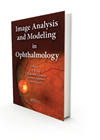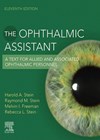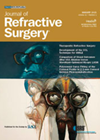You searched for "Biomicroscopy"
Quality matters in the management of serious eye disorders
1 June 2019
| Rod McNeil
|
EYE - Cataract, EYE - Glaucoma, EYE - Neuro-ophthalmology, EYE - Vitreo-Retinal
The author discusses the first quality standard for serious eye disorders from NICE and takes a look at new care models for enhanced service delivery. Patient backlogs pose risks to patient safety, with research showing that people are losing sight...
Large-scale study uncovers demographic and sex factors behind genetic cause of age-related visual loss
A new study has identified a major genetic contributor to Fuchs’ Endothelial Corneal Dystrophy (FECD), a common cause of vision loss, also highlighting the significant roles of sex and ancestry. FECD is a common, inherited eye condition that primarily affects...Image Analysis and Modelling in Ophthalmology
1 April 2015
| MN Abdul Karim
|
EYE - Imaging, EYE - Neuro-ophthalmology, EYE - General, EYE - Paediatrics, EYE - Strabismus
Recent advances have revolutionised ophthalmic imaging and helped understand the pathophysiology of ocular diseases and thus help in the diagnosis and management of ocular diseases. The authors of this book have gone through most of the available imaging techniques available...
The Ophthalmic Assistant: A Text for Allied and Associated Ophthalmic Personnel, 11th Edition
1 December 2022
| Jagruti Godhaniya
|
EYE - General
The 11th edition of The Ophthalmic Assistant is a great resource for anybody working within the world of eyecare and health. The book really does cater to a wide range of people including theatre staff, ophthalmic nurses, optometrists, dispensing opticians,...
Acanthaemoeba keratitis
1 December 2017
|
EYE - Cornea
In the second of this series I describe a case of Acanthaemoeba keratitis (AK) that was misdiagnosed for a prolonged period which resulted in a devastating outcome. This is one of half a dozen similar medico-legal cases I have dealt...
Haag-Streit UK launches new METIS 900 ophthalmic microscope system
21 March 2025
|
Research & Development
Haag-Streit UK is delighted to announce the launch of the new METIS 900 ophthalmic microscope system. The METIS combines Haag-Streit’s legendary optics with high-definition 4k visualisation and a stable coaxial red reflex, delivering superb clarity and detail for all surgical...
Troubleshooting in LASIK
Contemporary laser in situ keratomileusis (LASIK) is safe and effective. It remains the dominant intervention in routine refractive surgery for a good reason: predictable results, rapid visual recovery, and relatively simple strategies for revision treatment. Over 95% of patients are...Influence of FLEx and SMILE on corneal nerve density and ocular surface
This was a prospective study designed to compare the influence of femtosecond lenticule extraction (FLEx) and small incision lenticule extraction (SMILE) on the corneal nerve density and ocular surface for myopic correction. Thirty patients underwent bilateral lenticule extraction. One eye...The future of binocular viewing systems?
1 December 2022
| David Haider
|
EYE - General
I recently had the pleasure to visit Vision Engineering’s headquarters and manufacturing facility in Woking, UK. Vision Engineering have built an international reputation for engineering microscopes that provide 3D visualisation without the use of traditional optical eyepieces. Although the company...
Development of a modern surgical simulation suite to promote safer ophthalmic surgical training
5 August 2020
| David Lockington
|
EYE - Cataract, EYE - Refractive, EYE - Vitreo-Retinal, EYE - Orbit, EYE - General
For trainees, having access to surgical simulation equipment is more important than ever. The authors describe the creation of a bespoke teaching and training suite in Glasgow to help trainees develop their skills and promote surgical excellence. Simulation has become...
The only thing to fear is fear itself
1 February 2014
| Gwyn Samuel Williams
|
EYE - Cataract, EYE - Cornea, EYE - Glaucoma, EYE - Imaging, EYE - Neuro-ophthalmology, EYE - Oculoplastic, EYE - Oncology, EYE - Orbit, EYE - Paediatrics, EYE - Pathology, EYE - Refractive, EYE - Strabismus, EYE - Vitreo-Retinal, EYE - General
There is a song by the Amateur Transplants called ‘Finals Fantasy’ which describes in humorous detail how stressful clinical exams can be. Having not done any viva or objectively structured clinical examination (OSCE) style exams for many years indeed I...
If looks could kill – kohl and the eye
5 August 2020
| Simerdip Kaur
|
EYE - General
Simerdip Kaur takes a look at the latest ophthalmology-related news stories and asks which are based on facts and which are ‘fake news’. Headline: If looks could kill – kohl and the eye Human fascination with beautification can be traced...






